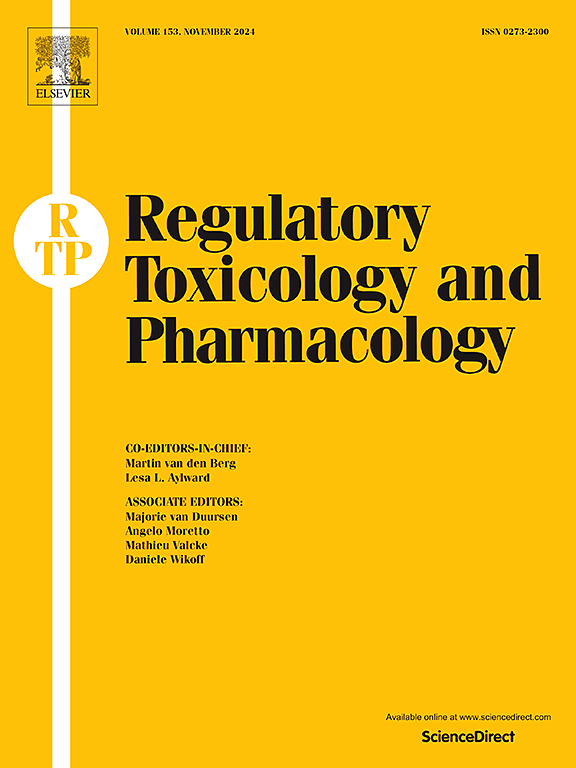Platform-based opportunities to streamline animal use in support of the 3Rs – recommendations from an antibody-drug conjugate analysis
IF 3.5
4区 医学
Q1 MEDICINE, LEGAL
引用次数: 0
Abstract
The field of antibody drug conjugates (ADCs) continues to be an active area of development which has greatly evolved over the past 25 years since the first approved ADC in 2000 (Mylotarg). Simultaneously, increasing attention is being given to the use of animals, particularly large animal species, in biopharmaceutical drug development in the wake of the global COVID-19 pandemic and legislation implemented/pending in the US Congress (the FDA Modernization Act). A recent publication summarizing data from an analysis of 14 antibody-drug conjugates (ADCs) provides a springboard for the recommendation of best practices to streamline nonclinical toxicology evaluation for these molecules. Additionally, key principles from the ADC molecule class may be applied to other biologic platforms, such as CD3 bispecific antibodies and possibly cell and gene therapy. Widespread adoption of modernized program strategies should lead both to a reduction in the use of animals in nonclinical toxicology evaluation and to more rapid delivery of new medicines to patients with unmet medical needs.
The primary goal of nonclinical toxicology evaluation in the pharmaceutical industry is the identification of hazards and characterization of their monitorability, manageability, and reversibility in support of clinical trials and the eventual marketing of new drugs. An additional key deliverable of a toxicology program is the determination of appropriate dose levels to be evaluated in clinical trials. To accomplish these goals, nonclinical toxicology studies have traditionally utilized animal models in keeping with recommendations of global health authorities (e.g., ICH M3 for small molecule drugs and ICH S6 for biologic drugs). Although the 3Rs of ethical animal use (reduce, refine, replace) have been recognized since the late 1950s (Russell and Burch, 1959), increasing attention is being given to the use of animals in pharmaceutical research. The COVID-19 pandemic and accompanying ban on the export of non-human primates (NHPs) from China highlighted the dependence of nonclinical safety evaluation on NHPs, particularly for biologics and other modalities that have limited cross-reactivity. This realization contributed to the passage of the FDA Modernization Act 2.0 and the drafting of additional legislation (FDA Modernization Act 3.0) and the recent ‘Roadmap to Reducing Animal Testing in Preclinical Safety Studies’ which codify support in the US for the refinement of nonclinical toxicology programs and signal an opportunity for decreased reliance on animal models for safety evaluation. Similarly, the European Federation of Pharmaceutical Industries and Associations (EFPIA) recently released ‘EFPIA Recommendations on Phasing Out Animal Testing for Chemical Safety Assessments’ with comparable assessments and recommendations aimed at the evolution of pharmaceutical toxicity testing away from animal studies.
基于平台的机会简化动物使用,以支持抗体-药物偶联分析的3r建议。
抗体药物偶联物(ADC)领域一直是一个活跃的发展领域,自2000年第一个获批的ADC (Mylotarg)以来,在过去的25年里已经有了很大的发展。与此同时,在全球COVID-19大流行和美国国会实施/未决立法(FDA现代化法案)之后,人们越来越关注在生物制药药物开发中使用动物,特别是大型动物物种。最近发表的一篇文章总结了14种抗体-药物偶联物(adc)的分析数据,为简化这些分子的非临床毒理学评估提供了最佳实践推荐的跳板。此外,ADC分子类的关键原理可以应用于其他生物平台,如CD3双特异性抗体和可能的细胞和基因治疗。现代化项目战略的广泛采用将减少在非临床毒理学评估中使用动物,并将更快地向医疗需求未得到满足的患者提供新药。制药行业非临床毒理学评估的主要目标是确定危害并确定其可监测性、可管理性和可逆性,以支持临床试验和新药的最终销售。毒理学项目的另一个关键成果是确定在临床试验中评估的适当剂量水平。为了实现这些目标,非临床毒理学研究传统上按照全球卫生当局的建议使用动物模型(例如,小分子药物的ICH M3和生物药物的ICH S6)。虽然自20世纪50年代末以来,已经认识到道德动物使用的3r(减少,改进,替代)(Russell and Burch, 1959),但越来越多的人开始关注在药物研究中使用动物。2019冠状病毒病大流行以及随之而来的中国禁止非人灵长类动物出口的禁令,突显了非临床安全性评估对非人灵长类动物的依赖,特别是对交叉反应性有限的生物制剂和其他方式。这一认识促成了FDA现代化法案2.0的通过和其他立法(FDA现代化法案3.0)的起草,以及最近的“减少临床前安全性研究中动物试验的路线图”,该路线图编纂了美国对改进非临床毒理学项目的支持,并标志着减少依赖动物模型进行安全性评估的机会。同样,欧洲制药工业和协会联合会(EFPIA)最近发布了“EFPIA关于逐步淘汰用于化学品安全评估的动物试验的建议”,并提出了类似的评估和建议,旨在使药物毒性试验远离动物研究。
本文章由计算机程序翻译,如有差异,请以英文原文为准。
求助全文
约1分钟内获得全文
求助全文
来源期刊
CiteScore
6.70
自引率
8.80%
发文量
147
审稿时长
58 days
期刊介绍:
Regulatory Toxicology and Pharmacology publishes peer reviewed articles that involve the generation, evaluation, and interpretation of experimental animal and human data that are of direct importance and relevance for regulatory authorities with respect to toxicological and pharmacological regulations in society. All peer-reviewed articles that are published should be devoted to improve the protection of human health and environment. Reviews and discussions are welcomed that address legal and/or regulatory decisions with respect to risk assessment and management of toxicological and pharmacological compounds on a scientific basis. It addresses an international readership of scientists, risk assessors and managers, and other professionals active in the field of human and environmental health.
Types of peer-reviewed articles published:
-Original research articles of relevance for regulatory aspects covering aspects including, but not limited to:
1.Factors influencing human sensitivity
2.Exposure science related to risk assessment
3.Alternative toxicological test methods
4.Frameworks for evaluation and integration of data in regulatory evaluations
5.Harmonization across regulatory agencies
6.Read-across methods and evaluations
-Contemporary Reviews on policy related Research issues
-Letters to the Editor
-Guest Editorials (by Invitation)

 求助内容:
求助内容: 应助结果提醒方式:
应助结果提醒方式:


